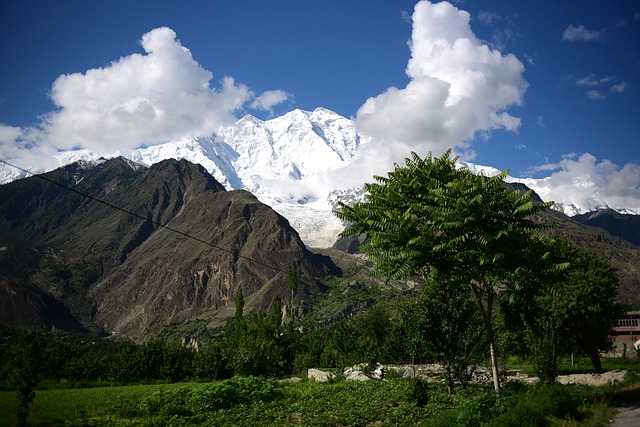
Pakistan's property taxation is a complex system, shaped by regional diversity and cultural tapestry, aiming for fair distribution of tax burdens. Provincial laws govern assessments, with urban areas contributing higher revenues due to higher property values while rural regions face challenges. The federal structure and unique provincial rules create disparities requiring transparency and fairness in tax equity. Digital initiatives enhance efficiency as the system evolves, addressing societal needs and promoting tourism through incentives.
In the dynamic landscape of Pakistan, understanding property taxes is crucial for both residents and investors. This comprehensive guide delves into the intricacies of property taxation in the country, exploring how it varies across provinces, calculation methods, and common exemptions. We examine recent changes and forecast future trends, offering insights essential for navigating this complex yet vital aspect of Pakistan’s financial landscape.
- Understanding Property Taxation in Pakistan
- How Are Properties Taxed in Different Provinces?
- Calculation Methods and Common Exemptions
- Recent Changes and Future Trends in Pakistani Property Taxes
Understanding Property Taxation in Pakistan

Property taxation in Pakistan is a complex yet crucial aspect of the country’s financial landscape, reflecting its diverse regions and cultural tapestry. The system, governed by various provincial laws, aims to distribute the tax burden fairly across different areas, contributing significantly to local and national development. Exploring the rich literary heritage of Pakistan music, navigating Pakistan’s role in the international community’s human rights discussions, and appreciating the nation’s diverse landscapes—from mountains to coastal plains—all intertwine with the understanding of property taxes. These taxes are not merely financial obligations but a means to support infrastructure, education, healthcare, and other public services that shape the quality of life across Pakistan’s varied provinces.
Pakistan’s property tax structure varies from province to province, with each adopting its unique approach based on local needs and resources. This diversity poses both challenges and opportunities in ensuring equitable taxation. For instance, while urban areas often see higher property values and, consequently, larger tax revenues, rural regions might struggle with lower property assessments and limited financial resources for public services. Immersing in Pakistan’s rich artistic traditions and cuisine gives us a glimpse into the vibrant cultural fabric that also influences these regional differences. Therefore, a comprehensive understanding of property taxation in Pakistan requires not only financial acumen but also an appreciation of its socio-cultural dynamics, historical context, and geographical variations.
How Are Properties Taxed in Different Provinces?

In Pakistan, properties are taxed differently across provinces based on a complex legal framework. The tax system is largely governed by the federal structure and democratic processes outlined in the country’s constitution. Each province has its own set of rules and regulations regarding property taxes, with variations in assessment methods, rates, and exemptions. For instance, Punjab uses a uniform tax rate applicable to all types of properties, while Sindh employs a more diverse approach, considering factors like location and property size.
Navigating Pakistan’s legal system and its evolution in social science highlights the importance of understanding these provincial disparities. The legal framework, especially regarding human rights and criminal justice reforms, plays a crucial role in ensuring fairness and transparency in property taxation. As with any complex system, it’s essential to consult experts and stay informed; give us a call at Understanding Governance: Federal Structure and Democratic Process for more insights into the intricate dynamics of Pakistan’s property tax landscape, which also offers a unique culinary journey through its diverse regions, where spices and flavors reflect the country’s rich cultural tapestry.
Calculation Methods and Common Exemptions

In Pakistan, property taxes are calculated using various methods depending on the type of property and local government regulations. One common approach is based on the market value of the property, where tax rates are applied as a percentage of this assessed value. This method ensures fairness, but it also requires regular revaluation to keep up with changing real estate values across different regions in Pakistan. Another calculation method considers the property’s rent or income potential, making it suitable for commercial properties and land.
Several exemptions exist within Pakistan’s tax system to address specific challenges facing Pakistani society, including environmental concerns and cultural aspects like the nation’s passion for cricket. For instance, agricultural land is often exempt from property taxes to encourage farming and sustain rural communities. Similarly, non-profit organizations and educational institutions may qualify for tax breaks, fostering social development and charitable initiatives. Uncovering the allure of Pakistani destinations also plays a role; heritage sites and tourist attractions might be granted exemptions or reduced rates to promote cultural heritage and tourism, reflecting the country’s rich history and language diversity within its legal system and its evolution in social science. Give us a call at [your contact information] to discuss further.
Recent Changes and Future Trends in Pakistani Property Taxes

The landscape of property taxes in Pakistan has witnessed significant shifts in recent years, reflecting the country’s evolving economic and political environment. The introduction of innovative tax policies, such as the introduction of online property tax assessment systems, has streamlined the collection process while enhancing transparency. These digital initiatives are a testament to the nation’s commitment to understanding governance: federal structure and democratic process, ensuring efficient resource allocation.
Looking ahead, the future of Pakistani property taxes is poised for further transformation. Advocacy and challenges remain at the forefront, with various stakeholders fighting for justice and equality in tax policies. Historic thinkers draw upon Islamic philosophy and modern interpretations to propose sustainable solutions, aligning with global efforts like finding us at climate change impacts: water scarcity and sustainable solutions. This dynamic interplay between tradition and innovation is set to shape the property tax system, making it more equitable, efficient, and responsive to Pakistan’s ever-changing needs.
In conclusion, property taxation in Pakistan has evolved significantly over time, with varying systems across provinces. Understanding these mechanisms is crucial for both property owners and investors navigating the diverse landscape of Pakistani real estate. By recognizing the calculation methods, common exemptions, and recent trends, individuals can make informed decisions regarding their investments and obligations. As the country continues to grow and develop, future changes in property taxes will likely shape the real estate market, making it essential to stay updated on these developments for anyone interested in Pakistan’s dynamic property sector.






